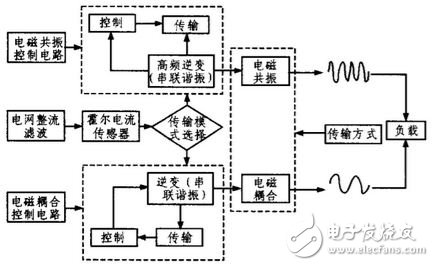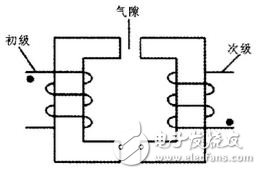LED light sources have developed to a new level in the past decade, and are soon applied to the terminal markets such as automobiles, buildings, medical, landscape lighting, etc. LED lighting has become more reliable and efficient than traditional lighting, and is increasingly becoming more popular in the market. popular. However, the installation and use of LEDs are constrained by the laying of power lines, which affects the flexibility of their use. At the same time, due to the presence of LEDs, high-frequency transformers such as drive sources, power switch tubes, etc., it will lead to the introduction of the grid. The harmonic current increases, which affects the power quality of the grid. At present, it is rare to have a complete set of system reports that consider reducing the harmonic effects of wireless power supply to the grid. Therefore, this paper presents a set of LED wireless drive solutions with harmonic compensation. This solution can adjust the LED to the appropriate brightness according to the illumination feedback feedback while facilitating the flexible installation of the LED. These popularizations of LEDs, improving power supply safety and reliability, and saving energy efficiently will be very beneficial.
1 overall design of the system
The system mainly includes: wireless power supply module, constant current drive source module, active power filter (APF) module, control circuit, and the overall block diagram of the system is shown in Figure 1. Among them, the inverter device and the rectification filter 2 constitute a wireless power supply module; the forward conversion circuit and the rectification filter 3 constitute a constant current source drive module. The MCU performs light feedback on the photocell to feedback-regulate the output current to stabilize the output and constant current. The APF outputs current through the main controller to offset the current harmonics injected into the grid by the wireless drive module to improve the power quality at the input.

Figure 1 System overall structure
2 system circuit design
2.1 Wireless power supply system design
The wireless power supply system consists of a control terminal, a transmitting end, and a load rectification circuit. The electromagnetic power supply is realized by electromagnetic coupling (near-distance transmission mode) and electromagnetic resonance (long-distance transmission mode), and the system structure diagram is shown in FIG. 2 .

Figure 2 Wireless power supply system structure
The transmitting end is mainly composed of an inverter and a transmission channel. The inverter is responsible for converting direct current (DC) into alternating current (AC), which consists of an inverter bridge, control logic and filter circuits. The short-range inverter frequency is 200~500 kHz, which is transmitted by electromagnetic coupling. The U-shaped loosely coupled ferrite core is isolated to achieve wireless power supply, as shown in Figure 3.

Figure 3 short-distance transmission
The long-distance inverter frequency is 1 MHz. It is transmitted by electromagnetic resonance. It is coupled by an air-core transformer. The primary and secondary are wound on the cylinder respectively to serve as a transmission medium to achieve long-distance power transmission, as shown in Figure 4.

Figure 4 Long-distance transmission
The system achieves stable and efficient transmission of electric energy through intelligent switching transmission mode. The relationship between the primary equivalent resistance and the distance is shown in Figure 5. z is the impedance and L is the distance. Only the equivalent impedance at the position of L0 is the smallest. According to this principle, when the receiving distance is far from L0, the impedance increases, the primary current decreases, and the primary input current is collected by the Hall current sensor to judge the mode switching.

Figure 5 Secondary in the primary equivalent impedance
Washing machines are very common in every family. Banshen washing machines, with high quality, good design and best service. Many products have been sold to over 30 countries. After many years of developing, banshen washing machines are getting better and better.
Our well-equipped facilities and excellent quality control throughout all stages of production enable us to guarantee total customer satisfaction. Besides, we have received CE, CB, RoHS and CCC certifications.
As a result of our high quality products and outstanding customer service, we have gained a global sales network reaching America, Asia, Europe, Africa, the Middle East and other countries and regions.
If you are interested in any of our products or would like to discuss a custom order, please feel free to contact us. We are looking forward to forming successful business relationships with new clients around the world in the near future.
7.2~8.5kg Twin Tub Washing Machine
Plastic Cover Washing Machine,Home Portable Washing Machine,Semi Automatic Washing Machine,Twin Tub Washing Machine With Dryer
Ningbo Banshen Electric Appliance Co., Ltd , https://www.banshendq.com